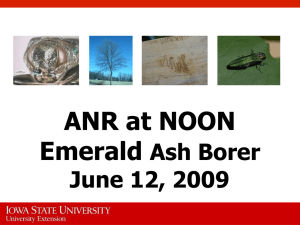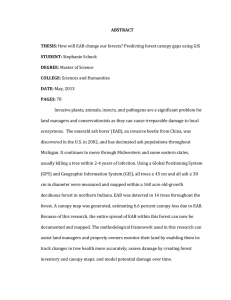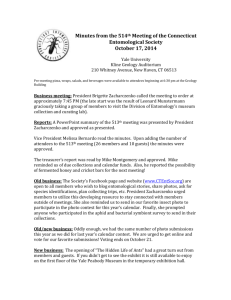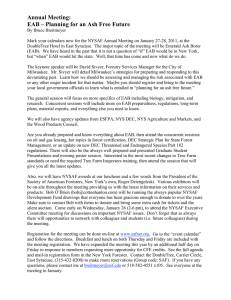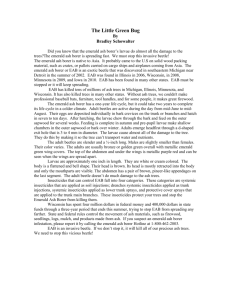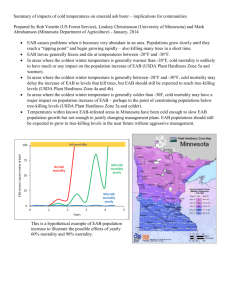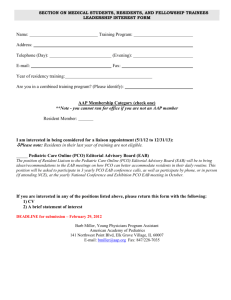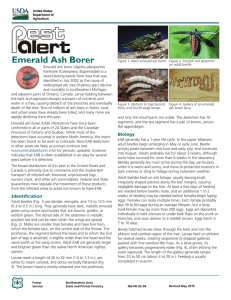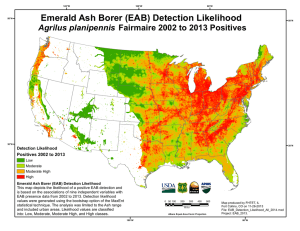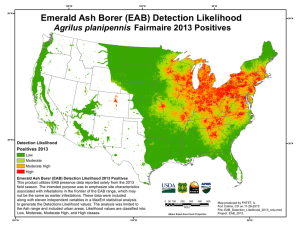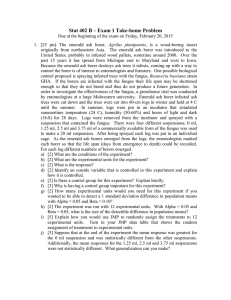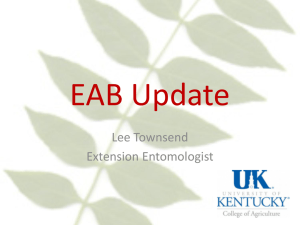Emerald Ash Borer Biological Control
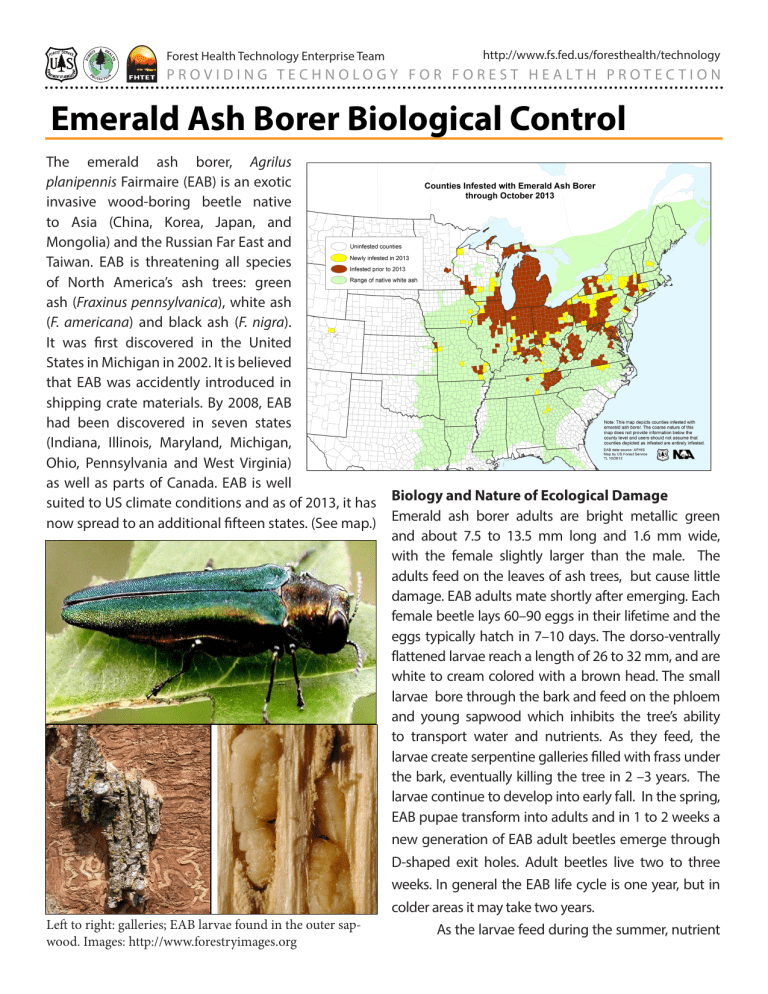
Forest Health Technology Enterprise Team http://www.fs.fed.us/foresthealth/technology
P R O V I D I N G T E C H N O L O G Y F O R F O R E S T H E A L T H P R O T E C T I O N
Emerald Ash Borer Biological Control
The emerald ash borer, Agrilus planipennis Fairmaire (EAB) is an exotic invasive wood-boring beetle native to Asia (China, Korea, Japan, and
Mongolia) and the Russian Far East and
Taiwan. EAB is threatening all species of North America’s ash trees: green ash ( Fraxinus pennsylvanica ), white ash
( F. americana ) and black ash ( F. nigra ).
It was first discovered in the United
States in Michigan in 2002. It is believed that EAB was accidently introduced in shipping crate materials. By 2008, EAB had been discovered in seven states
(Indiana, Illinois, Maryland, Michigan,
Ohio, Pennsylvania and West Virginia) as well as parts of Canada. EAB is well suited to US climate conditions and as of 2013, it has now spread to an additional fifteen states. (See map.)
Left to right: galleries; EAB larvae found in the outer sapwood. Images: http://www.forestryimages.org
Biology and Nature of Ecological Damage
Emerald ash borer adults are bright metallic green and about 7.5 to 13.5 mm long and 1.6 mm wide, with the female slightly larger than the male. The adults feed on the leaves of ash trees, but cause little damage. EAB adults mate shortly after emerging. Each female beetle lays 60–90 eggs in their lifetime and the eggs typically hatch in 7–10 days. The dorso-ventrally flattened larvae reach a length of 26 to 32 mm, and are white to cream colored with a brown head. The small larvae bore through the bark and feed on the phloem and young sapwood which inhibits the tree’s ability to transport water and nutrients. As they feed, the larvae create serpentine galleries filled with frass under the bark, eventually killing the tree in 2 –3 years. The larvae continue to develop into early fall. In the spring,
EAB pupae transform into adults and in 1 to 2 weeks a new generation of EAB adult beetles emerge through
D-shaped exit holes. Adult beetles live two to three weeks. In general the EAB life cycle is one year, but in colder areas it may take two years.
As the larvae feed during the summer, nutrient
Forest Health Technology Enterprise Team http://www.fs.fed.us/foresthealth/technology
P R O V I D I N G T E C H N O L O G Y F O R F O R E S T H E A L T H P R O T E C T I O N and water transport is interrupted. Foliage wilts and branches die. Many trees die after 3–4 years of infestation. An estimated 150 million ash trees have already been killed by EAB.
Traditional Control
Typically, traditional control involves the application of insecticide to prevent EAB infestation if there are known infestations within 15 miles. Control methods include soil applied systemic insecticides, trunk injected systemic insecticides, noninvasive basal trunk sprays, and protective cover sprays on the leaves, branches and trunk. Most insecticides that are currently registered for EAB control must be applied every year.
Biological Control
Exploration for natural enemies of emerald ash borer were initiated in 2003 and continue today (2013). Of the natural enemies recovered from EAB in China, three parasitoids were the most promising: an egg parasitoid
Oobius agrili (Encyrtidae), a larval endoparasitoid Tetrastichus planipennsi (Eulophidae), and a larval ectoparasitoid Spathius agrili
(Braconidae). Two new species of larval parasitoids were recovered in the Russian Far East/
Korea: Spathius sp. and Atanycolus sp.
The 3 parasitoids from China were approved for release in the US in 2007. Major releases were made in MI, MD, IN, OH, and IL in
2008–2010.
Parasitoids of emerald ash borer. Left to right: Oobius agrili , Tetrastichus planipennsi , and Spathius agrili .
Images: http://www.forestryimages.org
FOR MORE INFORMATION CONTAC T:
Richard Reardon, Program Manager
Biological Control
USDA Forest Service
180 Canfield Street
Morgantown, WV 26505
Phone: 304-285-1566 Fax: 304-285-1564
E-mail: rreardon@fs.fed.us
